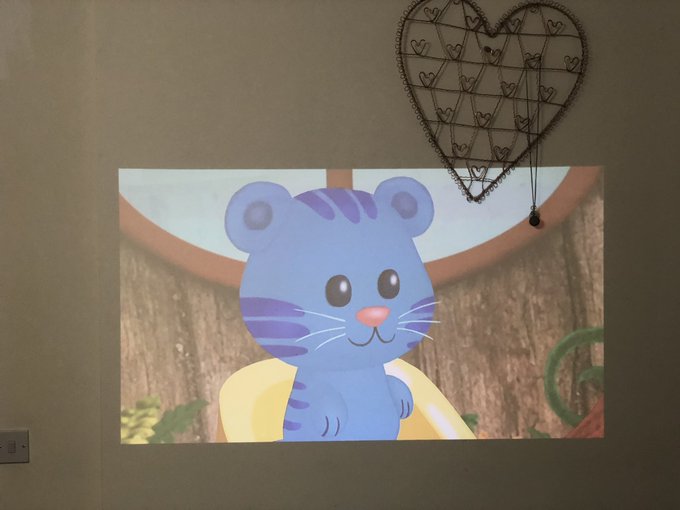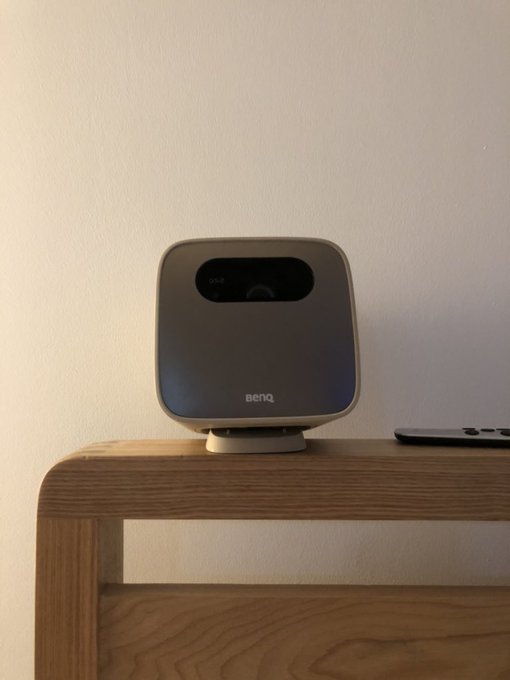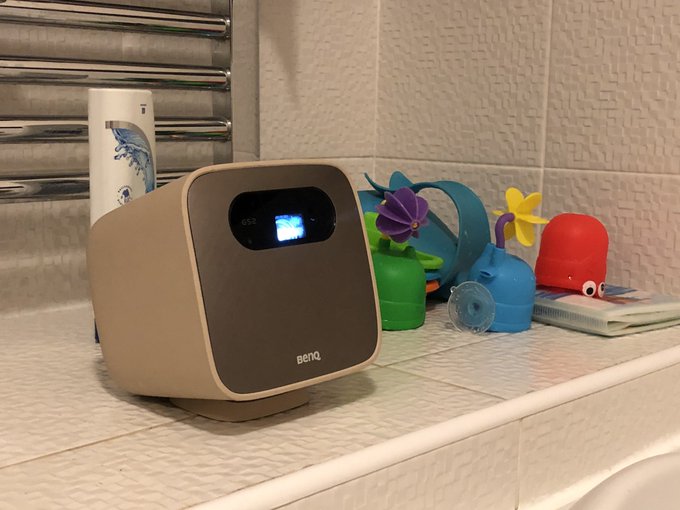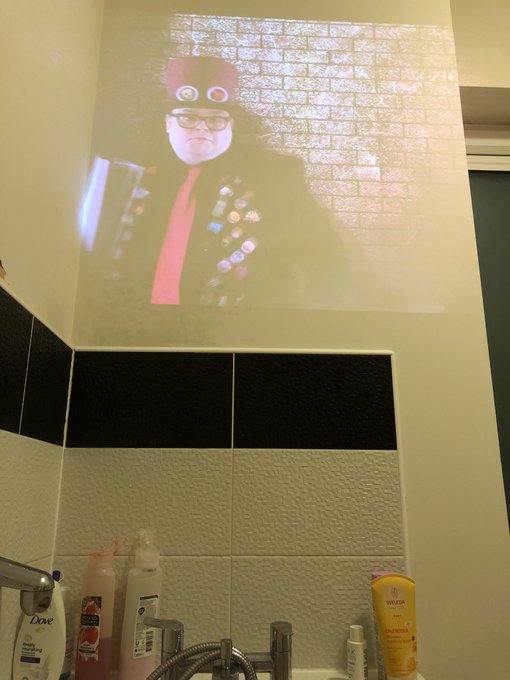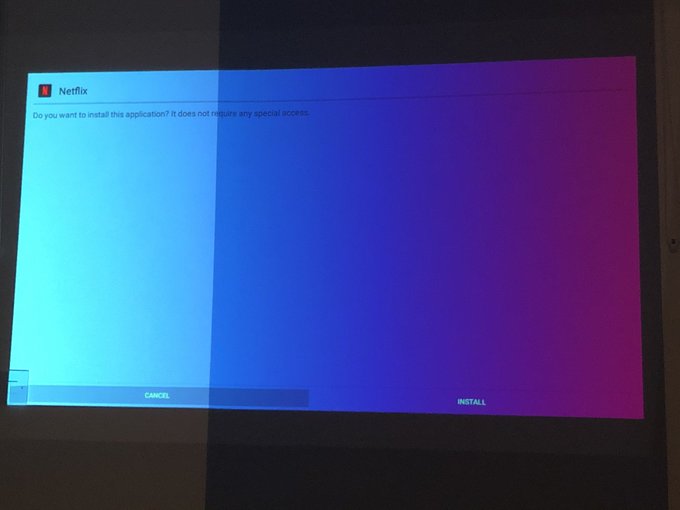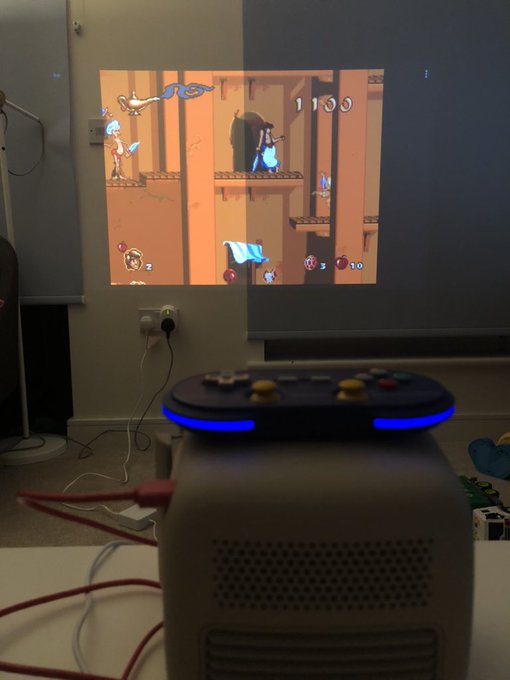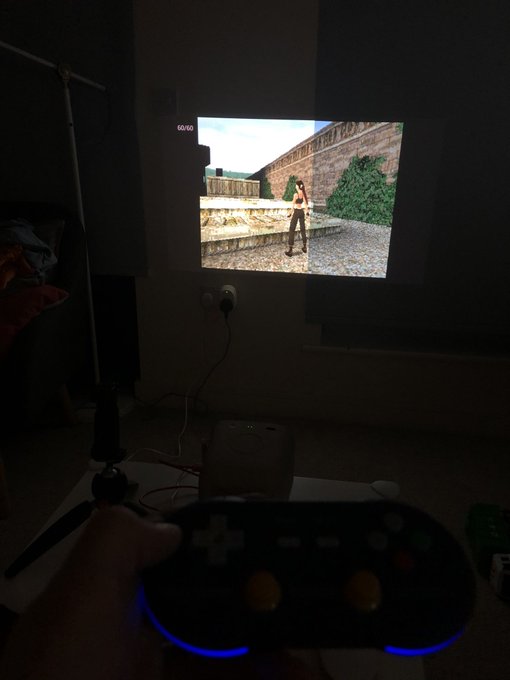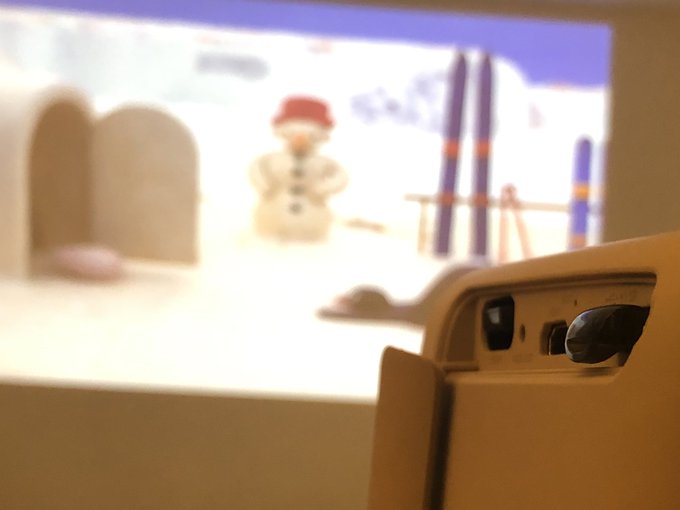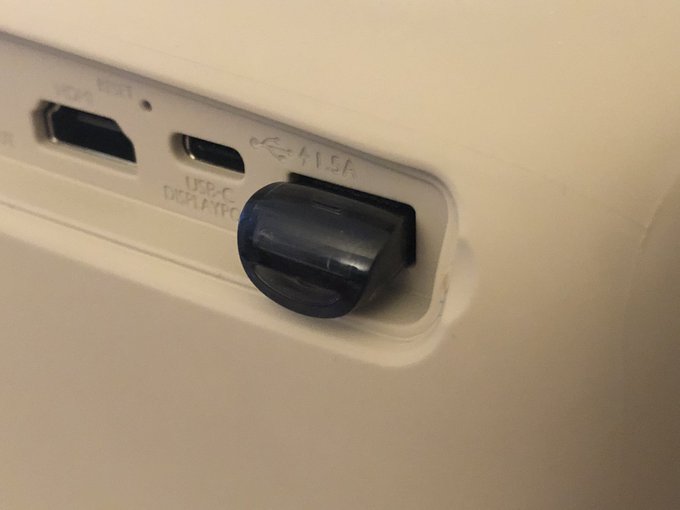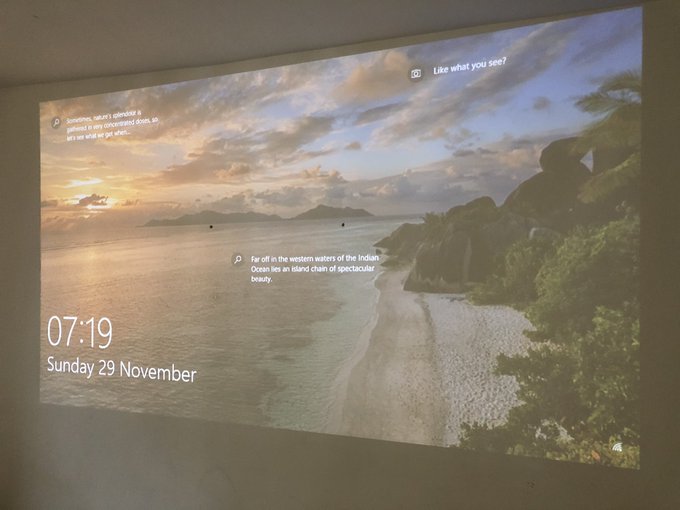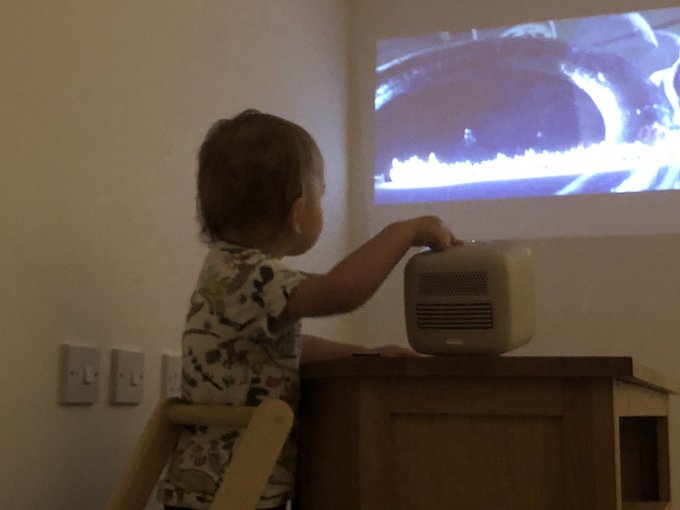BenQ GS2 Portable Projector Review
I can sum up my experience with the BenQ GS2 in one word: frustrating. But I don’t think these frustrations mean you should pass it up entirely. Hear me out.
The trouble with the GS2 is that it melds some really nice projector hardware, with the tragic garbage that is Android TV… 6.0. BenQ don’t really have much choice in this regard- when it comes to adding smarts to a product they’ve got two choices: Android TV or DIY something from the ground up. The latter choice, while certainly possible, would be an exercise in futility and place the GS2 on an even faster track to obsolesence. So Android TV is a necessary evil here. They could- however- have picked a slightly more recent version of Android TV. This installed version – 6.0 – was released in 2015. An appauling choice for a projector released in 2020. We’re not even talking eventual obsolesence here- this thing has practically launched obsolete and it really shows.
This is super disappointing and super frustrating – not because Android is a buggy, horrible, infuriating mess but because I feel compelled to tolerate its nonsense. When the GS2 works it’s really great. Being able to plonk a battery-powered projector in the middle of the kitchen table with no consideration for power wires and just have an entire wall be your screen- even with bright lighting from *four* cool-white LED bulbs- is immensely handy. Who needs a kitchen TV? *thunk* not me, my wall is now a TV.
On battery in a pretty brightly lit room. Not half bad. pic.twitter.com/WFz3jbTUI3
— Phil Howard (@Gadgetoid) November 21, 2020
What Android taketh away in terms of low-friction media playback, it giveth in flexibility. What if I told you that SNES9x EX – a SNES emulator – is available in the GS2’s app store, and you can stick a whole bunch of SNES ROMs onto a USB drive, pair an 8bitdo N30 Pro 2 and start playing your favourite classics on the side of a pegged-up bedsheet in the garden, like you had some sort of magic future console from spaaaacceee.
The hardware
Despite the meagre 720p resolution of the GS2 the picture is surprisingly good. Screen door effect – the name given to visible gaps between pixels, because they look like a screen door – is clearly visible up close, but the GS2 is clearly aimed at the kind of people who aren’t going to care. And, I must attest, despite testing a 4K, short-throw, laser projector with an IMMENSE picture that fills my entire living room wall… the GS2 picture was fine to me, even exceptional for its size. I *enjoyed* watching things on it.
Sits nicely on the end of the bed, too. Just a shame it has a cursed 5 year out of date Android version ? pic.twitter.com/EjGSVTOnJR
— Phil Howard (@Gadgetoid) November 23, 2020
Speaking of battery-powered. Yes, the GS2 has a battery. That battery has a life. Despite BenQs insistence not to tell you what the battery life might be I believe it’s in the ball-park of three hours. Getting through a Daniel Tiger marathon and half way through Pom Poko would seem to confirm this. It’s not going to last you all day, but you’ll get through an average length film with no issue. On battery power the picture is noticably dimmer than on mains, but still easily visible in a well lit room and clear and bright in a dim one.
BenQ steal notes from Apple with their AC adapter. It uses magnets to snap neatly into place and, as such, is very easy to insert and remove. The GS2 is all about convenience and you shouldn’t have to think about grabbing it from upstairs to plonk downstairs for some casual viewing.
Cementing its convenience factor, the GS2 defaults to auto-focus and even auto keystone. If you’re not familiar with “keystone” as a term- it’s how the projector corrects the shape of the picture from trapezoid to rectangular when it’s not pointed completely square at the wall. Geometry and all that! The GS2 knows how far it’s tilted and, thus, can correct the image in realtime as you adjust it to get your picture in the desired place. Auto-focus can be a little more pedantic- it happens when the projector is first powered on and *I swear* it happened automatically after I’d moved it. Usually, though, you’ll need to hit the dedicated focus button on the remote if you change the distance from your wall. As far as I can tell the GS2 has built in visioning and throws up a test pattern that it eyeballs to get the focus right. It focusses quickly and accurately every damn time. What did I say about this hardware? Yeah, it’s really good… goddamnit Android TV you’re letting everyone down here.
The projector has the usual bevvy of buttons on top, but in practise you’ll probably only use the power button. Hitting buttons *on* the projector will inevitably wiggle it around or adjust the tilt and bugger up your carefully positioned screen.
The remote mirrors the on-projector buttons with a 5-way nav (Up, Down, Left, Right, Ok) plus back/menu/home buttons and power. In addition to these it has volume controls and the aforementioned auto-focus button. The remote is garbage. It wants to look like a shiny, aluminium Apple TV remote but it’s a plastic-fantastic garbage that creaks when you use it. It’s also infuriating to use and requires being pointed directly at the projector to get a reliable button input. It’s difficult to tell, in some cases, if the remote is being a pain or Android TV is being unresponsive. For a projector of this price, with otherwise excellent design, this remote is inexecusably awful. Maybe the battery is dying? Maybe I should replace it. Well… It also uses CR2032 batteries in lieu of doing something sensible like integrating a LiPo and allowing you to charge it from the USB port in the projector. Bad BenQ, how could you overlook this in such an otherwise meticulously reasoned design?
If you’re not bothered about tying up your smartphone, you can use the BenQ Smart Control app in lieu of a remote. Smart Control worked right away when I installed it onto my iPhone, but is somewhat shy of perfect. While it includes both keyboard and mouse control, two-finger gestures such as scrolling will smoosh the cursor around the screen and the keyboard feature seems to … just not work. When you’re used to the tight integration of an iPhone with an Apple TV this feels janky.
But… if mouse and keyboard are supposed to work through a remote app, and the system has a cursor, and this is just Android? When happens if I plug a keyboard and mouse into the USB port… I’ll tell you what happens- it works! Sure it’s comically absurd to plug a whole keyboard and mouse into a projector, but I used a small official Raspberry Pi keyboard (that’s not a sponsored link, but I work at Pimoroni so buy from us :D) and the level of control that these traditional peripherals get over all the apps on the GS2 projector is immense. Typing in search queries to YouTube suddenly becomes effortless, clicking icons, scrolling through lists, and everything you’d expect from a mouse and keyboard. Yes, even the mouse wheel works. Wheee.
The GS2 also has – as you might expect from something designed for portable, outdoor use – built-in speakers. The speakers are… ok… they wont get you cinema quality sound, but are loud enough for casual TV watching. Even for a half deaf sod like me. If you have an Bluetooth speaker with a bit more punch, you can also pair it with the GS2 to give you some extra audio output oomph. The same applies to headphones if you want to listen to something at night. This is the thing- Android, for all its flaws, brings a lot of utility to what might otherwise be a bland and boring projector.
The GS2 is IPX2 splash resistant, which means it can handle a little light drizzle on top but not much else. If you’re caught in the rain, you’ll have time to rush it indoors without any damage. It’s not waterproof or humidity proof though, so don’t use it in the bath…
Don’t suggest to me that a projector might be splash resistant.
Cos I’m gonna test it. pic.twitter.com/4a7AvzJa9z
— Phil Howard (@Gadgetoid) November 23, 2020
Android TV Sucks
Android TV sucks, though. At least the version – the ancient 6.0 from 2015 – on the GS2 does, anyway. It seemed to consistently fight with any effort to get things working. Stuff I take for granted as working-all-the-time-every-time-without-fail on my iOS Phone (oh surprise surprise I’m an iPhone user and hate Android TV, shock horror) and my Apple TV just didn’t want to play ball. YouTube videos wouldn’t play. YouTube wouldn’t launch. YouTube would launch to a black screen. YouTube would crash and relaunch. YouTube would log me out. Huh… maybe it’s YouTube’s App that sucks the most here.
But it’s not all tears and frustration. While this crusty old version of Android can be a pig to get the simple things working on, it has a lot of potential for abuse. Want to play classic Megadrive or SNES games? No problem, you can install SNES 9x EX through the Aptiode store or sideload a whole host of other emulators.
Using Apps
Any attempt to push the smarts of the GS2 beyond their shipped defaults tended to be painful, and using the built-in features was hit and miss. When stuff didn’t work it was an exercise in frustration, rebooting, reinstalling, factory resetting and more time wasting nonsense. But… I had to stick with it…
Installing Netflix
Take Netflix for example. It’s pretty much synonymous with television for many people, and is pretty much my go-to for watching anything. Mostly for playing Star Trek in the background while I work, to drown out the riotous background noise invading my home office. Installing Netflix on the GS2 should be easy, right? Not so much.
Can I install Apple tvOS instead please? pic.twitter.com/5dpkcArm0g
— Phil Howard (@Gadgetoid) November 20, 2020
First off the GS2 comes with “Aptiode TV”, an alternative app store that contains only free apps. This is pretty great, to be fair, but if you’re unfamiliar with the concept of “Aptiode = Where you get your apps” then you might find yourself- as I did- digging through the menus of the GS2 trying to figure out where the heck to install new apps. Yes I didn’t read the instructions, who the heck does? No I’ve never owned or tested an Android TV based “smart” device before, and I’d be happy to never touch one again. I am, for all intents and purposes, a luddite when it comes to “smart” multimedia products.
Once I’d installed Netflix through Aptiode and negotiated through the fairly awful squinty UI to confirm that – yes – I really *do* want to install this app I went to launch it and…
NOPE! Says Netflix. The version available from the app store on the GS2 is not compatible with the version of Android on the GS2. Good times. Fortunately Netflix provide a solution for this problem by way of a link to their website with instructions for enabling side-loading of apps and installing an “.apk” of their client. You can ignore basically all of the instructions on this page and skip directly to downloading and installing the “.apk” which will install just fine out of the box, and replace the already installed Netflix client without any issues.
Once replaced it was a simple matter of logging into Netflix. The first attempt resulted in an abrupt crash – pretty much the watchword of software on the GS2 – but the second attempt got me logged in for some Pom Poko while we buzzed around the kitchen.
YouTube
The GS2 appeared to ship with some kind of YouTube in order to facilitate YouTube video playback from a connected device. This is great, but actually getting it to work was a whole world of pain.
I installed YouTube through the app store in order to be able to launch it and play videos directly on the device. I didn’t want to tie up my phone beaming videos for the toddler to watch. The YouTube app is great when it’s up and running, and once it works it tends to keep working. But it wasn’t short of issues.
In just shy of a day of usage I’ve seen YouTube fail to play videos, stubbornly staying on a frozen still of the last played video. I’ve seen it freeze solid during an ad, and require a complete reboot. I’ve seen it crash abruptly to the home screen. I’ve seen it constantly restart a video I was beaming from my phone. I’ve seen audio/video desync so horribly from an AirPlay’d that they were multiple seconds apart. I watch YouTube basically every single day on my phone and *never* have these problems, and issues with playing videos on an Apple TV were *extremely* are. Argh! Android TV is horrible.
Amazon Prime TV
The Amazon Prime TV app worked just enough to lull me into a false sense of security, but any attempt to actually play a video resulted in an immediate error. For love nor money I could not get this thing to play Amazon content- even beaming it from my iPhone. At this point I gave up and hooked up an Apple TV via HDMI to preserve what little was left of my sanity…
The shitty old Android OS in the BenQ GS2 is so insufferably bad I had to connect an Apple TV to stop myself hefting it out of the upstairs window. pic.twitter.com/ZBGEKbRRfj
— Phil Howard (@Gadgetoid) November 25, 2020
Emulators ahoy!
Well if Android wasn’t going to play nice with me for the simple things, I might as well abuse its relative openness to have some fun. One of the beautiful things about having a whole computer in your projector – aside from being able to hook up a mouse and keyboard and use it like you’re a Grandad – is that you can do a whole host of emulatey things.
For the uninituated a developer going by the name ExPlusAlpha wrapped up a whole host of emulators with a consistent user-interface and they’ve been my go-to for years. For the most part they’re named CONSOLE.emu, and loading MD.emu and GBA.emu alongside SNES 9x EX on the BenQ GS2 was easily done by sticking the regular version of Aptiode onto a USB drive and browsing to/installing the .apk file.
Welp wasn’t much more complicated to get MegaDrive on there… though I realise Aladdin was available for SNES too ? pic.twitter.com/iNXezDWCAj
— Phil Howard (@Gadgetoid) November 21, 2020
For ROMs, a 16GB Kioxia memory stick was then *plenty* to dump complete collections of European SNES and Megadrive games onto, albeit actually navigating to the contents of the USB drive is a little finickity in the emulators, requiring you to hit the bar at the top of the file browser (in the emulator), go to “Root Filesystem” then find “/mnt/usb/0000-0000/` (where 0000-0000 is some sequence of numbers relating to your USB drive) and finally navigate into your folder full of sweet, sweet ROMs.
Once set up the Android system inside the BenQ GS2 seems more than powerful enough to handle Megadrive, SNES and GBA emulation- it probably wont punch much higher than that. I managed to boot Tomb Raider 2 and Crash Bandicoot in PPSSXX – for example – but the emulator would consistently crash after a minute or so.
Tomb Raiser 2 might be asking a bit much! pic.twitter.com/PnVjW3BOWn
— Phil Howard (@Gadgetoid) November 21, 2020
HDMI & USB
Anything that more or less bypasses the janky old version of Android seems to fare pretty well on the GS2. Playing a batch of Pingu episodes I ripped from a DVD for X was flawless- the videos played without a single hitch, and if the projector is started up with a USB device inserted it will prompt on boot to browse media or cancel and do something else. I had a bit of a hiccup with internet access and spent a day or so without any whatsoever- in this time the GS2 played videos from USB and I couldn’t help but note the bitter irony of a device seeming to work better *without* an internet connection.
Fortunately the BenQ GS2 projector actually works better *without* the internet ?? pic.twitter.com/hGy8D5uKwU
— Phil Howard (@Gadgetoid) November 28, 2020
Similarly the connected Apple TV over HDMI, and an Azulle Byte 4 mini PC that I needed as part of my contrived internet access restoration project, both worked without a hitch. In HDMI mode the Android OS gets right out of your way and things just seem to work fine.
A little wall-sized debugging… pic.twitter.com/rTvLQwlZDC
— Phil Howard (@Gadgetoid) November 29, 2020
In conclusion
The GS2 is a projector that I want to love. It’s utilitarian and accessible. A projector for the people. It’s easy to set up, easy to move around, easy to charge, and tough enough to shrug off the kind of minor, accidental abuse you might get from having to hurry it indoors when it starts raining, or when it goes toe-to-toe with a small child. But the software lets it down and makes me dread the half an hour of frustrating faffing around it will take me to get it playing content every time I want to watch something. The remote is also inexecusably terrible.
He’s trying to find the off switch… pic.twitter.com/3IcWk0eckB
— Phil Howard (@Gadgetoid) November 24, 2020
The thing is… these things are fixable. Without a great deal of changes BenQ could swap the remote for a nice solid one with an integrated battery and a microUSB (or USB Type-A to Type-C these days I guess) charging cable. If they were feeling brave they could switch it up to Bluetooth and eliminate the need for LOS. Sheeesh if they offered a replacement remote as an optional upgrade I’d recommend it but as it stands this creaky, nasty plastic abomination really lets the crisp, clean and solid build of the GS2 down. Ironically one of BenQs FAQ questions is “Can I control the BenQ projector with a remote control designed by other manufacturers?”- so even *they* know their remote sucks. If you’re wondering, the answer is yes. You can substitute your projector remote with a not-terrible all-in-one or programmable alternative.
Android TV might be harder to fix, but the projector has an update feature which means it should be possible to upgrade to a less broken version in future. Whether BenQ will put in the legwork remains to be seen.
If you can put up with a broken, frustrating Android install for the time being then the GS2 might be worth picking up at a discount. For the full price, however, this out-of-date OS is going to age quickly and make an expensive purchase one fast regret. Avoid until it’s on sale or updated.
